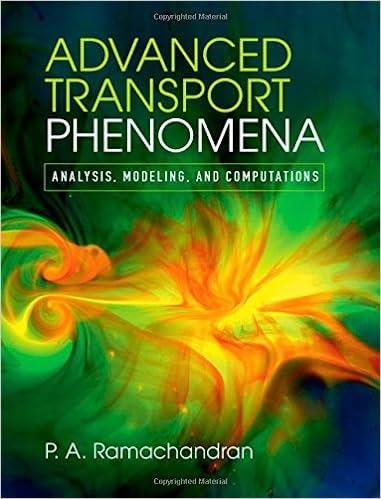Velocity based on volume-fraction weighting. If the volume fraction (phi_{mathrm{a}}) is used as the weighting factor, one
Question:
Velocity based on volume-fraction weighting. If the volume fraction \(\phi_{\mathrm{a}}\) is used as the weighting factor, one can define an average velocity \(\boldsymbol{v}^{\mathrm{V}}\) as
\[\boldsymbol{v}^{\mathrm{V}}=\sum \phi_{v} \boldsymbol{v}_{i}\]
Derive a form of Fick's law based on this definition of average velocity for a binary mixture. Note that the volume fraction of solute \(i\) is related to the partial molar volume of solute, \(\hat{V}_{i}\), in the mixture by the following relation:
\[\phi_{i}=C_{i} \hat{V}_{i}\]
Also verify that the volume-fraction-averaged velocity is the same as the mole-fractionaveraged velocity when the total molar concentration (molar density) is constant, e.g., for a gas mixture.
Verify that volume-fraction-averaged velocity is the same as the mass-fraction-averaged velocity when the total mass density is constant, e.g., for a liquid mixture.
These observations led Cussler to conclude that the use of the volume-average velocity is more general, but most textbooks disguise the use of this averaging.
Step by Step Answer:

Advanced Transport Phenomena Analysis Modeling And Computations
ISBN: 9780521762618
1st Edition
Authors: P. A. Ramachandran





